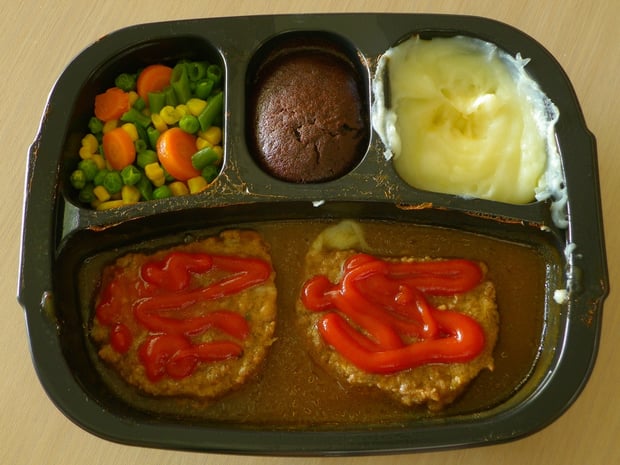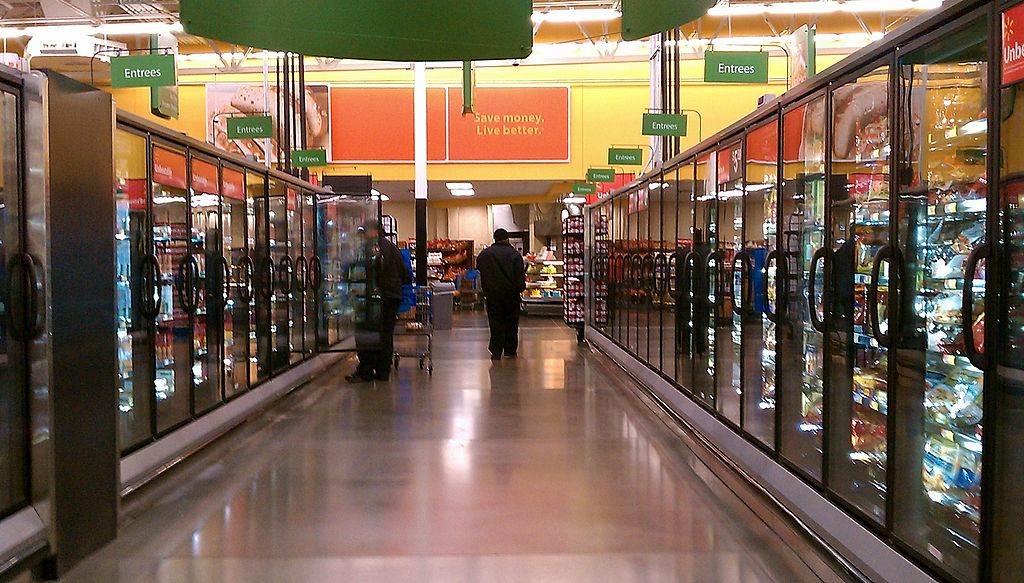We love a good pun but sometimes the frozen fruit is just hanging too darn low. So, while attempting to keep the temperature jokes to a minimum, we must point out that frozen food sales are, well, heating up. After nearly a decade of steady declines across all frozen food segments—including prepared meals, pizzas, vegetables, and desserts—manufacturers and grocers have caught up to changing consumer tastes and are making advancements in the seemingly most important of all demographic groups, millennials.
Indeed, according to Acosta research, 43% of Millennials reported making more frequent trips to the frozen food section, compared to 19% and 20% among Boomers and Silents. Acosta’s Colin Stewart elaborated, “Competition in the category is heating up as fast-paced Millennials, who often take greater interest in the health benefits of food than older generations, look to frozen as a way to eat well in a convenient and hassle-free manner.” (See it's not only us who can't resist a good frozen foods pun).
This is good news for grocers who have been searching for ways to make center-of-store in general, and frozen foods in particular, cool again. So let's follow the market research and see why frozen food sales sunk to the absolute zero of a Siberian winter and how have moved into to more promising early spring thaws.
Hoisted by their Own Prepackaged Petard
It is appropriate that a product beloved for its convenience began as a convenient efficiency for a food manufacturer. Indeed, the first modern TV dinner came by way of Swanson in the early 1950s—looking to unload their post-Thanksgiving turkey surpluses, they developed a foil wrapped frozen dinner entrée (complete with mashed potatoes, stuffing, and peas) guaranteed to be hot and delicious after only 20 minutes in most standard ovens.
Obviously advances in flash freezing technology, as well as a humble little box called the microwave, brought TV dinners to their apotheosis (or possibly nadir), with new offerings and technologies making meals faster and more cost effective. Simultaneously, the past several decades also saw the introduction of “diet” frozen entrees, with Lean Cuisine quickly asserting itself as a go-to option for dieters on the go.
Over the last ten years or so, however, frozen foods' greatest feature—convenience and preservability—have become a liability; like margarine, traditional frozen foods began connoting artificiality, loaded full of unpronounceable ingredients and often catering to misguided low-fat and low-calorie dietary trends of the past. According to Quartz, by 2015, 40% of adults believed frozen dinners had little to no nutritional value.

Consequently, though still popular among older consumers and bachelors, frozen food sales have been declining since 2008. For grocers looking to draw traffic to frozen food sections, that is not cool.
How bad has it gotten? Over the past five years, prepared frozen foods’ compound annual growth rate has been only .2% and unit sales have declined 6.7%. Buoyed by an average price increase of 8.2%, their dollar sales nonetheless only grew .9% in that period, concealing the depth of the problem. Lean Cuisine—long the standard bearer of convenient, “healthy” frozen dinners—has seen a 20% sales decrease since 2015. Like we said, Siberian winter cold.
A Healthy Thaw
But don’t declare an end to the ice age just yet.
Manufacturers and grocers have started to catch up to the shifts in dietary preferences millennials are driving. Edward Jones analyst Brittany Weissman believes that, as the axiom goes, necessity has become the mother of reinvention in this category: “I think a lot of big companies don’t think frozen foods would be a growth driver for them. But they’re trying to stop the bleed in sales, so you’re seeing innovation with key trends you’re seeing with millennial consumers.”
There will be some challenges to reorienting frozen dinners as millennial friendly. First, there is of course the problematic myth that fresh food is inherently more nutritious than frozen food, particularly when it comes to vegetables. This simply is not the case, as scientific studies have repeatedly shown, but in an era where fresh and whole ingredients are king, it is a tall order to dig out frozen foods. They certainly aren't as glamorous as fresh foods—we don’t need science for that—but work can be done to present them as a cost effective lifestyle that doesn't sacrifice health or quality.
Indeed, Weissman continued, “The biggest thing they’re trying to do is show that it’s real food, and just because it’s frozen doesn’t mean that it can’t be good for you.”
There has always been a market for calorie-laden super frozen meals (think: Hungry Man), catering to bachelors (who will likely remain bachelors) with little to no regard for health. But for prepared frozen foods to truly recover among everyday consumers (again: millennials), they must shed their artificial and over-processed image and reclaim the healthy mantle. Clearly that word, “healthy”, can mean different things to different people, but there are some obvious trends in how we think about dietary health these days.
First, it's long past time companies stop catering to yesterday's diets. The days of packaging exalting “ONLY 300 CALORIES” are long gone—millennial frozen food consumers care far less about the calories and fat content, and far more about the quality of ingredients, and the creativity of the recipe. This means things like riced vegetables, organic vegetable tots, and hearty, healthy protein portions not drenched in gravy (no Salisbury steak, please).
A Tough Frozen Eggroll to Crack
Consequently, big companies like Nestle, which owns Lean Cuisine, are reformulating, and perhaps more importantly, relabeling as well. Low-calorie, low-fat products and buzzwords are out, supplanted by a new emphasis on quality of ingredients and protein content. Instead of emphasizing that the Ravioli only has 8 grams of fat and 300 calories, it now highlights its whole grain pasta, its substantial protein level, and the organic tomatoes.
This move follows successful niche food producers like Amy’s and Evol, both long-standing Whole Foods staples, to appeal to time-pressed, health-conscious consumers. And startups like Zoni Foods hope to be the next wave in prepared frozen meals, emphasizing vegetarian entrees made of clean, whole ingredients.
From Parents' Sofas to Frozen Food Aisles
For all this talk of what millennials want to eat, it is important to think about how they want to eat. Because the thing is, millennials and prepared frozen foods should go together like peas and carrots.
First, we know they love convenience. Even cereal can be a bit much for them.
Second, and far more importantly, despite perceptions of them as an underemployed generation still sleeping in their parents' basement, the millennials have gotten older, and, dare we say grown up? They have full time jobs and kids and mortgages. This means tight budgets and tighter schedules (it is also, no doubt, very time consuming to be so ironic and authentic all the time). So suffice to say, money and time are somewhat scarce resources, and that is fertile, frosty soil for frozen food sections.
That's because frozen foods are convenient as all heck. They take minutes to prepare, virtually eliminate food waste from spoilage, and can be eaten on one's own schedule as opposed to structured meal times. And millennials want all that convenience. They just don't want to sacrifice what is important to them: creative recipes, clean and easily understood ingredients, few to no preservatives, and—for celiac sufferers and their sympathizers—no gluten.
It's not like they expect five star restaurant quality, they just want to ensure they aren't getting hospital vending machine quality either.
How to End the Cold War: What the Grocery Industry Market Research Says
According to Acosta, frozen foods are one of the few categories more frequently purchased in-store than online and have the potential to bring customers in from the perimeter. So how can grocers use these trends to breath life into the frozen food section and their center of store?
It's tough to say without knowing your customer base. A grocery store in Brooklyn or Berkeley has far different shoppers than one in Keller or Kenosha.
So you probably should figure out precisely who your shoppers are, what they want in frozen foods, and how they want it. That's where the grocery industry market research gets far more specific. Perhaps customer intercepts and panel surveys would be a good place to start? Understand your existing and potential shoppers, build a frozen food section that is navigable and friendly to all, while also leaning into current trends.
Also, mix it up. Don't just have one ghettoized section of specialty frozen foods in the corner, replete with vegetarian, vegan, organic, and other next-wave frozen foods. Integrate them throughout the section to encourage browsing.
In addition to increasing foot traffic, maybe, just maybe, grocers' frozen food section can become the next great meeting point of American democracy, where Hungry Men can mingle with organic spinach enchilada munching millennials. That would be a grocer's dream.
Looking for more insights? Check out our 2017 Grocery Industry Report!

